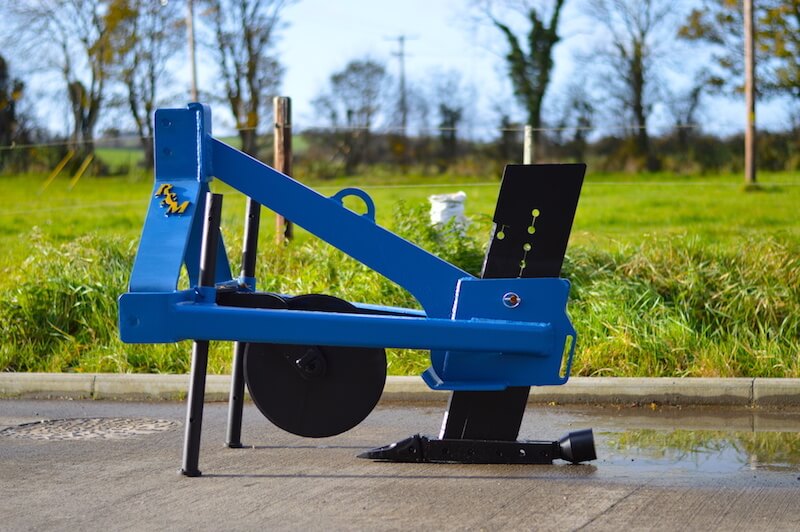And I can get into what's left of the orchard. I need to figure out the best easiest and cheapest way to remove water as the ground is pretty much all clay and it never dries out. And my poor trees are drowning already lost 3 pear trees and a couple old apple trees. I was thinking a middle buster I figure the B will be able to handle it if I dont get stupid. I read or saw some place about putting a chain on the back to drag through the dirt like a mole tunnel. So if anybody has any other ideas, please jump in and let me know.
If the rain ever stops
- Thread starter skeets
- Start date
If you can bury the top of a perferated 4" pipe even 2" below the ground, and it goes slightly down hill ... It will drain, off, but if it's perfectly flat, gonna be much harder!
I think you "mole tunnel" will collapse in time, especially if run over by your tractor.
I have clay soil too!

I originally dug the ditch with my backhoe, and bucket, down near the utility pole it's over 2.5' deep, and the top of the rise ... I wanted to make it more "mowable" with a bigger tractor, as it was quite steep ... I scraped off the sides, and covered up the piping ...

If you don't mind above ground like a swale ... Use the middle buster to loosen up the soil, and if you can start the ditch with clearing out the loosened soil with your bucket hitting it sideways at first ... Kinda like this, I was trying to make a tiny ditch, and didn't have my 6'' BH bucket yet ...

Once you have enough to then drive into the ditch with your rear axle now off camber, you can scoop it out but switching right and left side tires in the ditch ...

I think you "mole tunnel" will collapse in time, especially if run over by your tractor.
I have clay soil too!
I originally dug the ditch with my backhoe, and bucket, down near the utility pole it's over 2.5' deep, and the top of the rise ... I wanted to make it more "mowable" with a bigger tractor, as it was quite steep ... I scraped off the sides, and covered up the piping ...
If you don't mind above ground like a swale ... Use the middle buster to loosen up the soil, and if you can start the ditch with clearing out the loosened soil with your bucket hitting it sideways at first ... Kinda like this, I was trying to make a tiny ditch, and didn't have my 6'' BH bucket yet ...
Once you have enough to then drive into the ditch with your rear axle now off camber, you can scoop it out but switching right and left side tires in the ditch ...
Last edited:
Trench and lay a pipe into the trench, and backfill with 3/4" crushed stone. The deeper the better, and pitch it to daylight at the end. Trees don't grow in clay, so there must be some soil in there.
Her in Michigan, downstate from me in the Bay City area there are a lot of deep ditches that you can see drainage pipes sticking out of the ground and there is ALWAYS a trickle of water running out of those pipes. I want to add these are located in tilled fields not lawns.
Russell King
Well-known member
Lifetime Member
Equipment
L185F, Modern Ag Competitor 4’ shredder, Rhino tiller, rear dirt scoop
See this site. Seems that a mole plough is common in England to create drainage paths


Mole Plough-Your ideal drainage solution. - R&M Buckets
The R&M Mole Plough is used to create mole drains that allow the downward movement of ground water in heavy soil.
rmbuckets.com
BAP
Well-known member
Lifetime Member
Equipment
2012 Kubota 2920, 60MMM, FEL, BH65 48" Bush Hog, 60"Backblade, B2782B Snowblower
Get a subsoiler and pull it as deep as your tractor will pull it. Usually you want to be 18-22” deep, but you may not be able to pull it that deep. Each pass wants to be around 30” apart if there is room between the rows to do so. You don’t want to get too close to the trees because it will cut off roots. This will help tremendously on allowing water to get into the ground and help with drainage. If you have puddling, reshaping the ground and putting in drainage like others have mentioned will help a lot. We used to subsoil our corn fields on a 3 year rotation, and it helped tremendously with drainage in low spots, plus allowed better root growth.
The area in the Laurel Highlands is a composite of lime stone, sand rock and clay soil. The clay layer has to be broken up with organics or granulation of inorganics to promote drainage. The mineral content of the clay soil is high, however due to the fine nature of the soil it compacts, and is difficult for root systems to develop, hence the drowning of the root systems. A large amount of granulated lime stone, will help to release the nutrients locked up in the clay, however at 9000 pounds an acker it is not a cost effective alternative. Yes I have had it tested by Penn State Ag extension. As I said, cheap and easyTrench and lay a pipe into the trench, and backfill with 3/4" crushed stone. The deeper the better, and pitch it to daylight at the end. Trees don't grow in clay, so there must be some soil in there.

